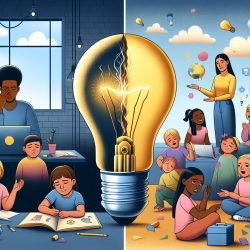Introduction
In recent years, the integration of Chinese Medicine (CM) into Indigenous communities in Canada has sparked a fascinating dialogue on transcultural healing practices. A study titled "The Old Ways Are the Old Ways": A Qualitative Study of Chinese Medicine Care in Indigenous Communities in Canada explores this phenomenon, revealing how CM is being embraced within these communities. This blog delves into the study's findings and discusses how practitioners can enhance their skills by embracing cultural humility and transculturalism.
Transculturalism: Bridging Worlds
One of the central themes of the study is transculturalism, which highlights the conceptual overlap between CM and Indigenous belief systems. Practitioners observed that the acceptance of CM was not solely due to its technical aspects but also its resonant similarities with Indigenous healing practices. For instance, both systems emphasize the movement of energy for healing, whether through acupuncture needles or traditional Indigenous methods like feathers or cedar bows.
This transcultural exchange fosters trust and acceptance, encouraging dialogue about the healing properties of traditional practices. Practitioners can enhance their skills by recognizing and respecting these cultural intersections, thereby building stronger relationships with the communities they serve.
Cultural Humility: Serving as Guests
The study emphasizes the importance of cultural humility, where practitioners view themselves as guests on Indigenous lands. This perspective requires them to follow the community's lead, respecting their traditions and readiness for CM integration. Practitioners can improve their skills by adopting a culturally humble approach, acknowledging the historical context and power imbalances that have affected these communities.
By doing so, practitioners can create a safe therapeutic environment, fostering trust and facilitating healing. This approach also involves collaborating with biomedical professionals who validate nonbiomedical therapies, further supporting community acceptance of CM.
Multidimensional Healing: Beyond Physical Ailments
The study highlights the multidimensional healing benefits of CM, which extend beyond physical ailments to mental, emotional, and community-level health improvements. Practitioners reported significant changes in patients' well-being, including reductions in pain medication usage and improved mental health.
Practitioners can enhance their skills by focusing on holistic healing, addressing underlying traumas, and considering the broader social context of their patients' health challenges. This approach not only benefits individual patients but also contributes to community resilience and well-being.
Operational Challenges and Future Visions
Despite the successes, the study acknowledges operational challenges, such as economic insecurity and limited funding for herbal treatments. However, practitioners remain optimistic about the potential for expanding CM programs in other underserved communities.
Practitioners can contribute to future visions by advocating for sustainable funding models and supporting community members in obtaining CM training. This approach empowers Indigenous communities to take ownership of their health care, fostering long-term resilience and self-determination.
Conclusion
The principles of transcultural exchange and cultural humility offer valuable insights for practitioners seeking to improve health outcomes in Indigenous and marginalized communities. By embracing these principles, practitioners can create culturally resonant and effective health care programs.
Further research is needed to explore the experiences of community members receiving CM care, ensuring that their voices guide the development of future programs. To read the original research paper, please follow this link: "The Old Ways Are the Old Ways": A Qualitative Study of Chinese Medicine Care in Indigenous Communities in Canada.










